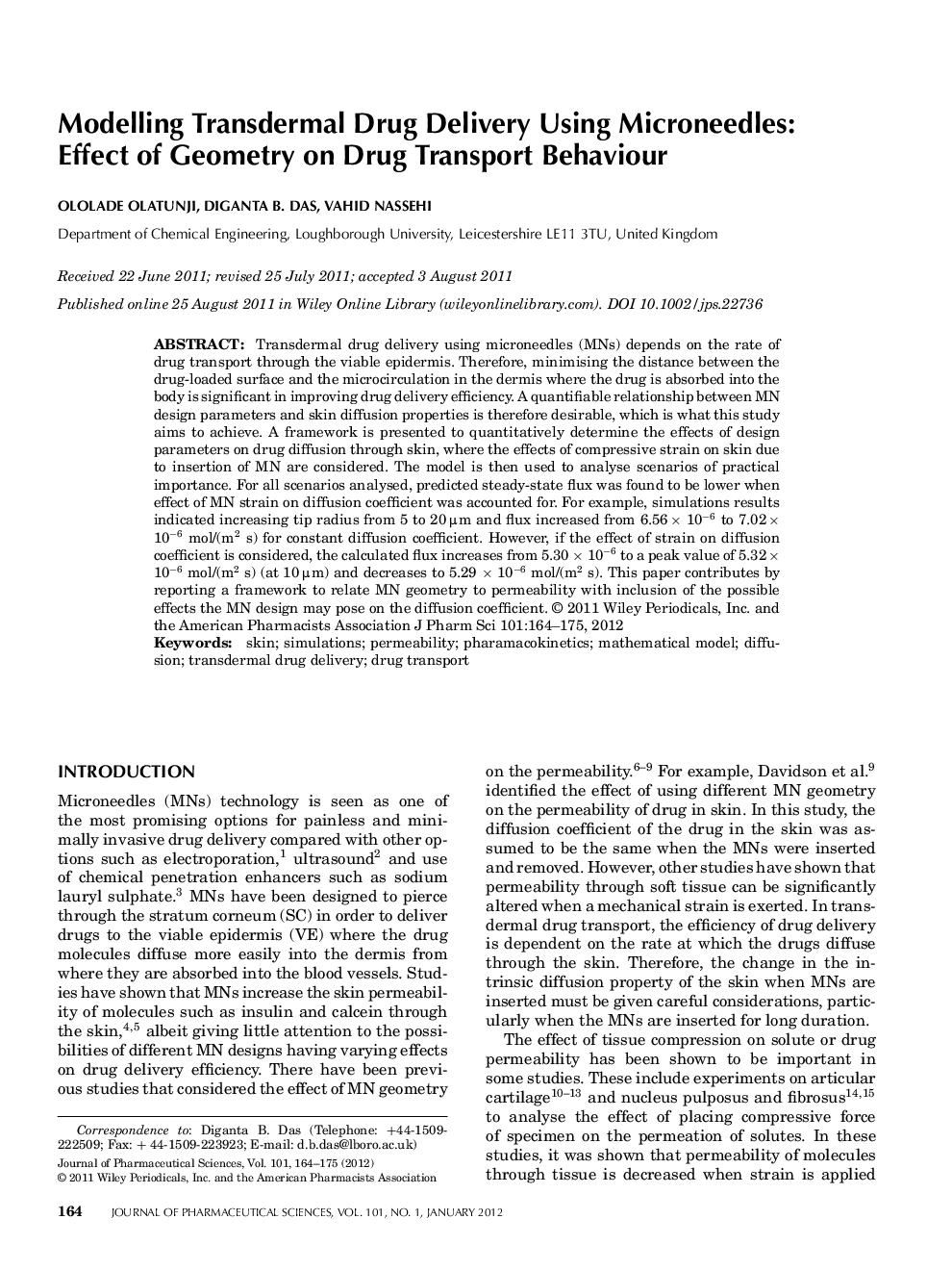| Article ID | Journal | Published Year | Pages | File Type |
|---|---|---|---|---|
| 2485403 | Journal of Pharmaceutical Sciences | 2012 | 12 Pages |
Abstract
Transdermal drug delivery using microneedles (MNs) depends on the rate of drug transport through the viable epidermis. Therefore, minimising the distance between the drug-loaded surface and the microcirculation in the dermis where the drug is absorbed into the body is significant in improving drug delivery efficiency. A quantifiable relationship between MN design parameters and skin diffusion properties is therefore desirable, which is what this study aims to achieve. A framework is presented to quantitatively determine the effects of design parameters on drug diffusion through skin, where the effects of compressive strain on skin due to insertion of MN are considered. The model is then used to analyse scenarios of practical importance. For all scenarios analysed, predicted steady-state flux was found to be lower when effect of MN strain on diffusion coefficient was accounted for. For example, simulations results indicated increasing tip radius from 5 to 20 µm and flux increased from 6.56 à 10â6 to 7.02 à 10â6 mol/(m2 s) for constant diffusion coefficient. However, if the effect of strain on diffusion coefficient is considered, the calculated flux increases from 5.30 à 10â6 to a peak value of 5.32 à 10â6 mol/(m2 s) (at 10 µm) and decreases to 5.29 à 10â6 mol/(m2 s). This paper contributes by reporting a framework to relate MN geometry to permeability with inclusion of the possible effects the MN design may pose on the diffusion coefficient. © 2011 Wiley Periodicals, Inc. and the American Pharmacists Association.
Keywords
Related Topics
Health Sciences
Pharmacology, Toxicology and Pharmaceutical Science
Drug Discovery
Authors
Ololade Olatunji, Diganta B. Das, Vahid Nassehi,
